Drought tolerant planting scheme
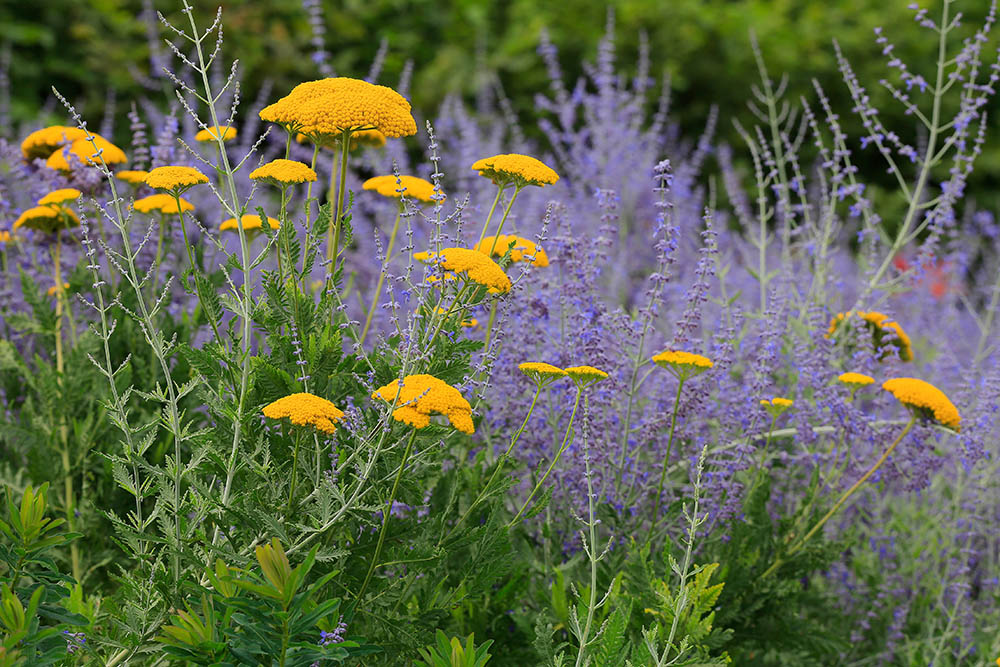
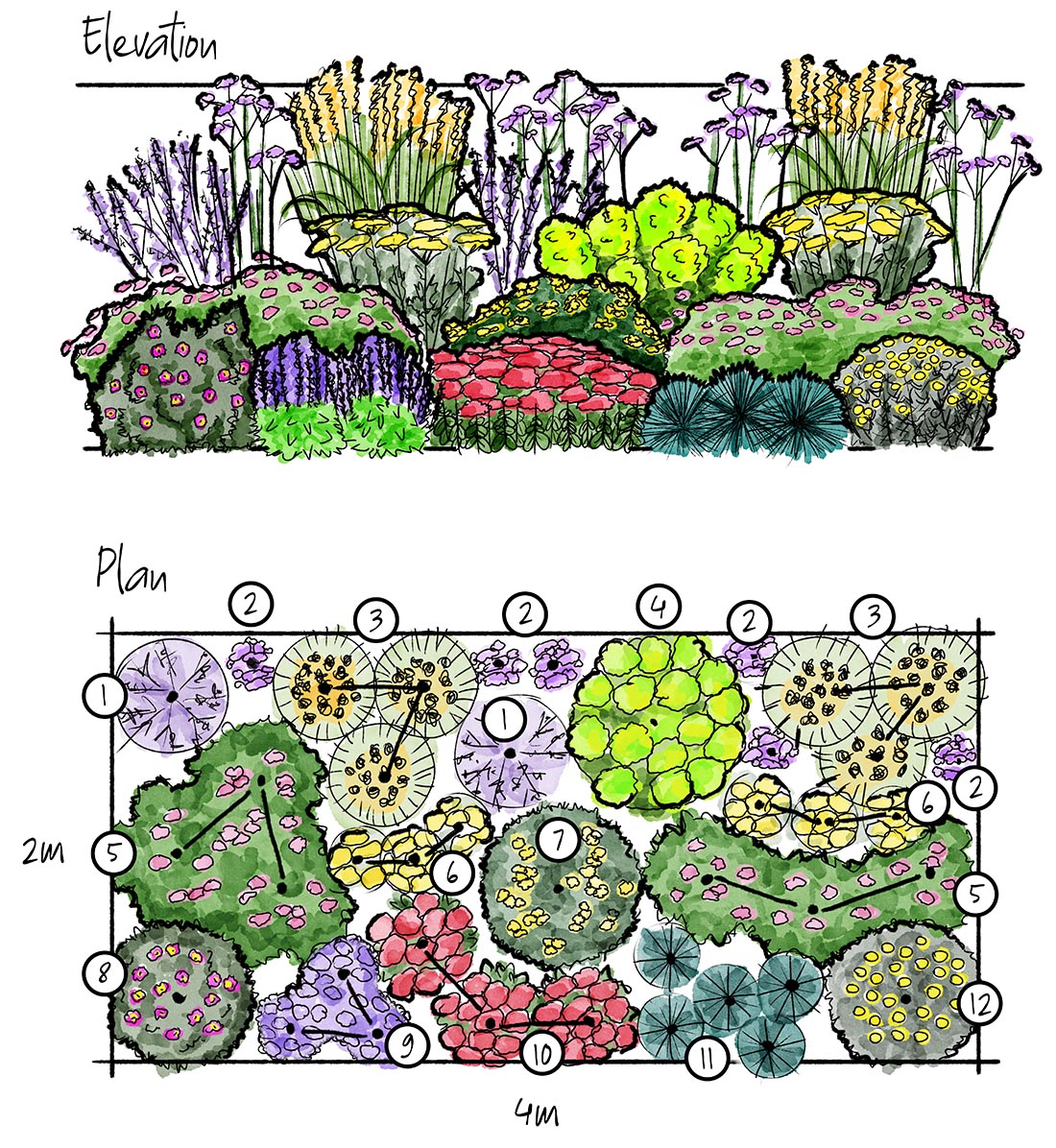
Drought tolerant planting scheme
As the climate in the UK changes, we should consider using plants that are adapted to hot, dry summers, especially in the south of England where we experience regular hosepipe bans and milder winters.
Drought-tolerant species often originate from the Mediterranean and naturally grow together, because they are adapted to the same habitat, and therefore create a harmonious planting scheme.
The plants have similar characteristics – many have aromatic grey-green or silver leaves that reflect the sun’s rays; some have hairy leaves and stems, or produce a waxy outer layer, that helps to reduce transpiration from the plant’s tissues. The plants often have deep and branching root systems to seek out soil moisture.
Drought tolerant gardens are beneficial because they are generally low maintenance, requiring minimal watering once established, and the plants tend to provide plenty of nectar and pollen for pollinating insects.
To reduce maintenance further, a gravel garden can be created by laying weed-suppressing membrane over the soil before covering with a moisture-retaining mulch of gravel – this type of border is perfect for a sunny, well-drained area with low fertility soil.
1 Pervoskia ‘Blue Spire’ 2 Verbena bonariensis 3 Calamagrostis x acutiflora ‘Karl Foerster’ 4 Euphorbia charachias subsp. wulfenii 5 Geranium endressi ‘Wargrave Pink’ 6 Achillea ‘Moonshine’ 7 Brachyglottis ‘Sunshine’ 8 Cistus x pulverulentus ‘Sunset’ 9 Nepeta × faassenii 10 Sedum ‘Autumn Joy’ 11 Festuca glauca 12 Santolina chamaecyparissus

①
Pervoskia ‘Blue Spire’
An erect, deciduous perennial with slender, white stems that bear aromatic, grey-green leaves and panicles of small, lavender-blue flowers. Perovskia ‘Blue Spire’ is great for planting en masse alongside pathways and positioned in the middle of sunny borders.
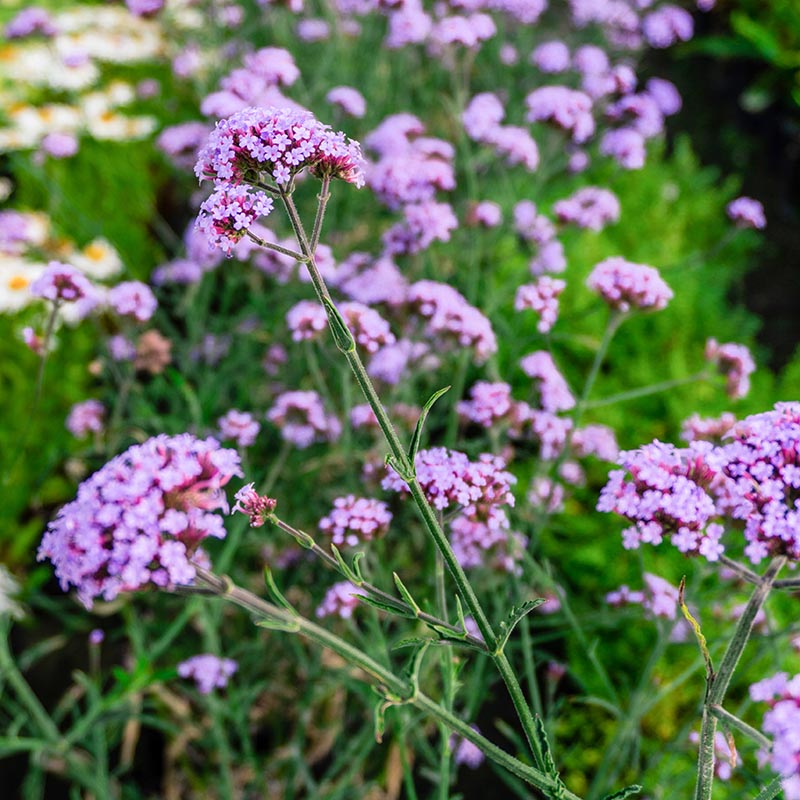
②
Verbena bonariensis
A sun-loving perennial that has tall branching stems with flattened heads of lilac-purple flowers. Verbena bonariensis works well in a prairie-style planting scheme alongside tall grasses and can be positioned in any part of a sunny border.

③
Calamagrostis x acutiflora ‘Karl Foerster’
A clump-forming, upright grass with arching leaves which emerge in early spring and feathery plumes in summer that later fade to buff in autumn. Looks striking when planted in groups. The height and erect habit make this grass ideal for forming a screen and it brings great winter interest when its stems catch the frost.
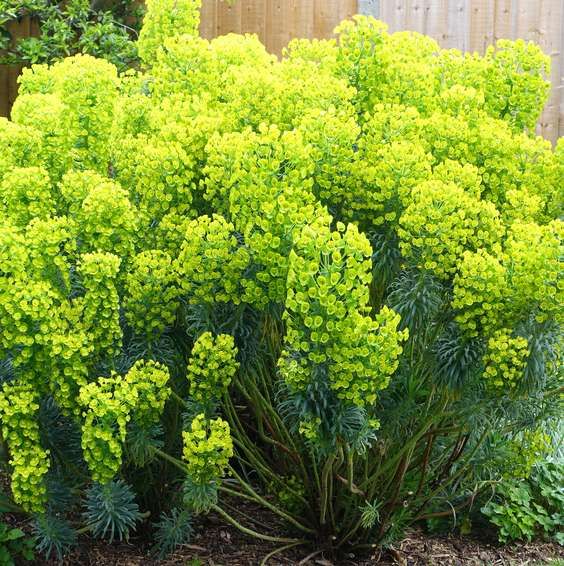
④
Euphorbia characias subsp. wulfenii
An upright shrub with showy heads of vibrant, lime green flowers and oblong, grey-green foliage. Brings structure to borders with its natural, rounded shape.

⑤
Geranium endressi ‘Wargrave Pink’
A long flowering perennial with veined, divided foliage and saucer-shaped, pink flowers. Provides a long season of nectar for bees and other pollinators.

⑥
Achillea ‘Moonshine’
A herbaceous perennial growing up to 60cm tall, with grey-green foliage and flat heads of canary yellow flowers on erect stems. Works well amongst ornamental grasses. Very attractive to butterflies and bees.

⑦
Brachyglottis ‘Sunshine’
A mound-forming shrub with hairy, silver-grey foliage and bright yellow, daisy-like flowers in summer. It is a great groundcover option for sunny borders.
.
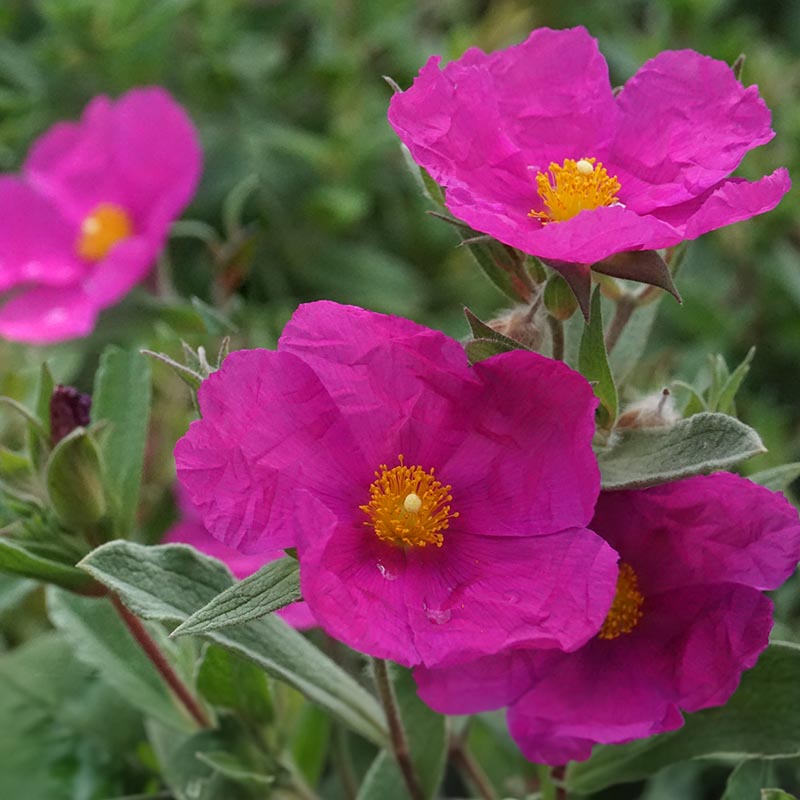
⑧
Cistus x pulverulentus ‘Sunset’
A low spreading shrub with grey-green, wavy leaves and masses of magenta flowers with prominent yellow centres. Cistus × pulverulentus ‘Sunset’ is a lovely low maintenance planting option and works well positioned in the front of a sunny border.

⑨
Nepeta × faassenii
A clump-forming, dwarf perennial with spikes of lavender flowers and aromatic, hairy, grey-green leaves. Great for edging borders and pathways.

⑩
Sedum ‘Autumn Joy’
An upright perennial that has flat-topped, salmon pink flowerheads which transition to a stunning pink-bronze, and eventually copper-red, boasting fantastic autumn colour. Its grey-green foliage is fleshy and succulent-like. Great for adding structure and the dried flowerheads look pretty in winter with a light dusting of frost. A useful late source of nectar for bees and butterflies.
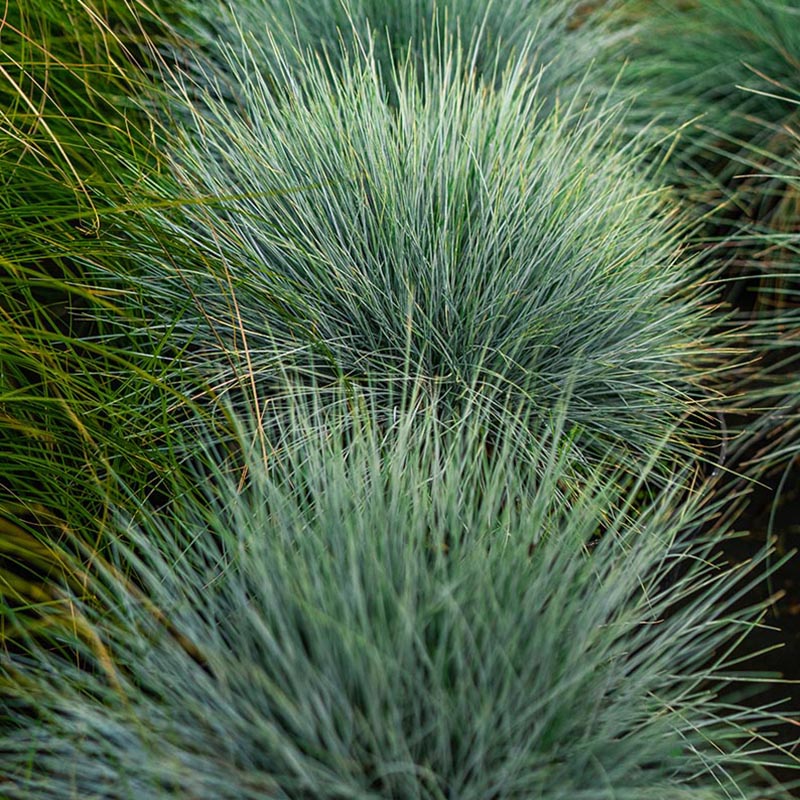
⑪
Festuca glauca
An evergreen, dwarf grass with upright tussocks of stiff, blue, needle-like foliage and blue flowerheads in summer. Works well in a container or as part of a gravel garden.

⑫
Santolina chamaecyparissus
A small clump-forming shrub with aromatic, finely divided, light grey foliage. Small, button-like, scented yellow flowers appear in summer. Santolina chamaecyparissus is a nice edging plant for a sunny border and adds a lovely splash of colour during the summer months.

